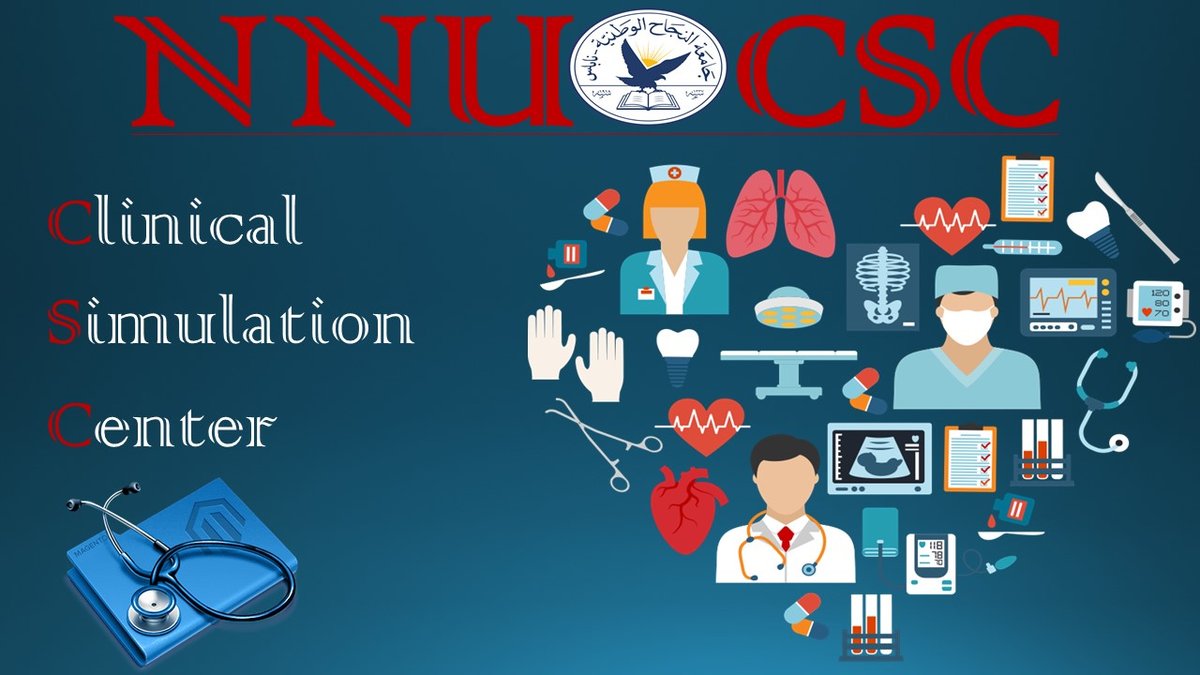
Introduction
The laboratories of the simulation center of the faculty of medicine and health sciences - department of nursing and midwifery are one of the advanced practical laboratories to qualify and prepare students to be able to acquire medical and nursing skills, before the application on reality, within hospitals and health institutions, so that integrates the theoretical side with the practical side. Providing a clinical environment that simulates the environment of hospitals and health institutions through careful preparation of advanced laboratories equipped similar to those institutions that would contribute to raising the professional and technical performance of students of nursing and midwifery and this is what drives the department strives to keep up with everything new updated.
Overview
This simulation center provides educational and training opportunities for all students that address nursing and midwifery students' real needs to improve their academic retention and success. Students in this department will experience high quality educational and clinical training environment. What makes this simulation center unique is that it prepares and trains graduates to meet the needs and demands of the society as health leaders, caregivers, teachers/educators, advocators researchers, and counselors. Besides, it makes productive and mutually beneficial relationships between the nursing department and the community, higher education organizations, businesses, local schools, regional colleges, and universities. Simulation center laboratory simulates as a mini-hospital, providing the nursing and midwifery students of all levels a safe training environment and allowing them to train for all kinds of situations that students will deal with them.
Main purpose
It provides a suitable place to simulate a real hospital environment that is prepared with various equipment and devices that contribute to the preparation and training of students in the department of nursing at different nursing skills.
Specific objectives
- Provide an environment simulated clinical field environment.
- Enhance the student's self-confidence and bridge the gap between the theoretical and clinical side.
- Providing opportunities to gain hands-on training for various skills.
- Providing students with the skills needed to work within an integrated health team.
Content of the simulation center
The simulation center is equipped with the highest-fidelity patients-dolls and technology. It includes four separated classrooms serve as patients rooms, two control rooms, and two debriefing room as specified below :
Adult patient simulation room fully equipped with two high-fidelity patient manikins with technology. These advanced and high-efficiency puppets allow applying all the nursing skills of each specialty, as they work with a wireless system and linked with control devices (tablets) to control and programming them in every possible scenarios and situation a student might face in the hospital or clinic and apply it safely before working in one.

Mom / Female patient simulation room to serve as a labor , and a gynecology unit fully equipped with two high quality patients’ manikin ( Mother & Baby ) , open heating system for the baby , with technology and these advanced and high-efficiency puppets allows applying all the medical and nursing skills of each specialty, as they work with a Wireless system and linked with control devices (tablets) to control and programming them in every possible scenarios and situation a student might face in the hospital or clinic and apply it safely before working in one.
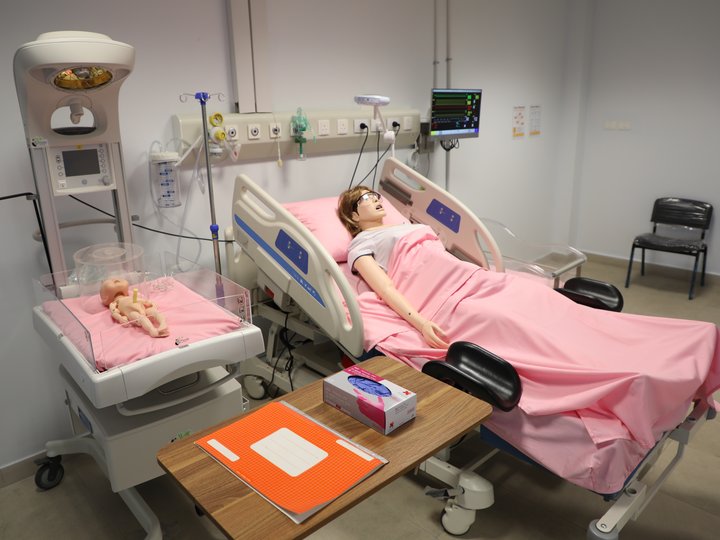
Junior patient simulation room to serve as a pediatrics unit , fully equipped with one high quality patients’ manikin , with technology , these advanced and high-efficiency puppets allows applying all the medical and nursing skills of each specialty, as they work with a Wireless system and linked with control devices (tablets) to control and programming them in every possible scenarios and situation a student might face in the hospital or clinic and apply it safely before working in one.

Debriefing rooms are fully equipped with 2 high-quality TV monitor, with a complete camera system (SMOTS) to monitor students’ work with patients in the rooms, transfer the image and sound to other students in the debriefing room, The debriefing allows the immediate feedback and a reflective critical thinking analysis and communication tool for participants of the simulation exercise. The purpose of the debriefing assessment provides an intense post-conference and active evaluation process driven by instructors and peers.
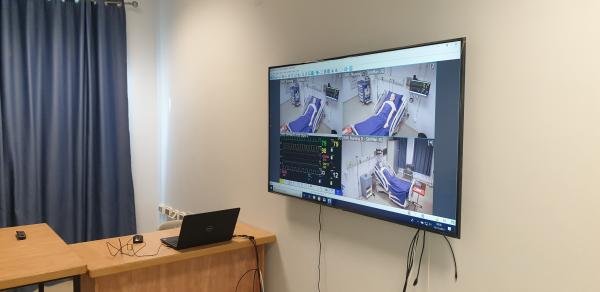
The students of all levels can apply all their basic and advanced medical and nursing skills during the training in the simulation center, such as full assessment of the patients , administering all types of medicine and a safe manner , inserting intravenous injection, administering intramuscular injection , applying the skills of ventilation , intubation , anesthesia , surgical procedures ,giving medicines, inserting urinary catheter and stomach tube, hear the heartbeats and lungs sound, preform CPR and all other skills that can work with any patient in the hospital and apply Basic Life Support (BLS), Advanced Cardiovascular Life Support (ACLS) in accordance with American Heart Association Guidelines.
For More Information Follow our Facebook Page at the Following Link:
ANNU Clinical Simulation Center –مركز محاكاة جامعة النجاح الوطنية السريري
--------------------------------------------------------------------------------------------------------------------------------------------------------------------
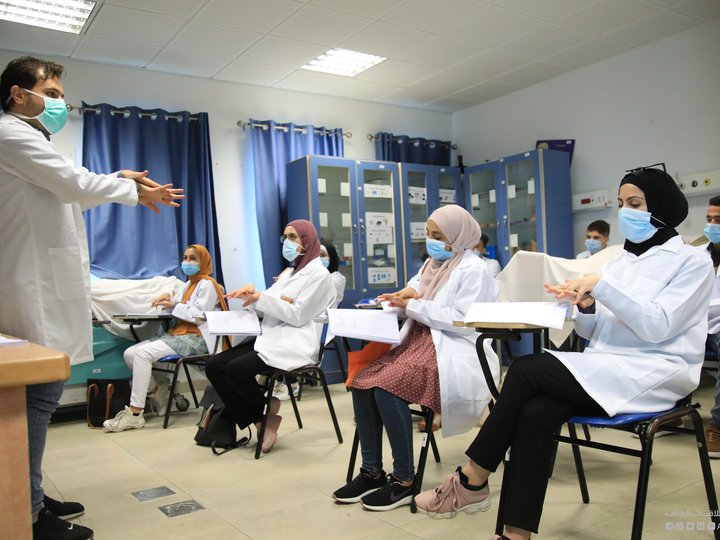
Fundamental nursing health laboratory contains all the materials and equipment’s related to the nursing basics in accordance with the accreditation standards prior to train nursing students on the basic/essential skills that needed in the first year in order to prepare them well to appropriate engage in different training hospitals.
This laboratory uses a variety of ways in learning like videos and demonstration that explains the process of adult and pediatric nursing health care also a full training on a child’s doll in response to the theoretical knowledge.

To know the appropriate positive trends for the care of adults and their families, physiological responses, social and psychological individual's health problems, and actual and potential disorders that affect functional health patterns. The laboratory purpose of giving the student practical experience before starting in the training field by providing the opportunity to provide full nursing care for each disruption in patterns of functional health using the nursing process as a basis for the implementation of the plan of nursing care, the relevant skills in the nursing process, decision-making skills, problem-solving and provide nursing care based on the theoretical knowledge at the Nursing Sciences
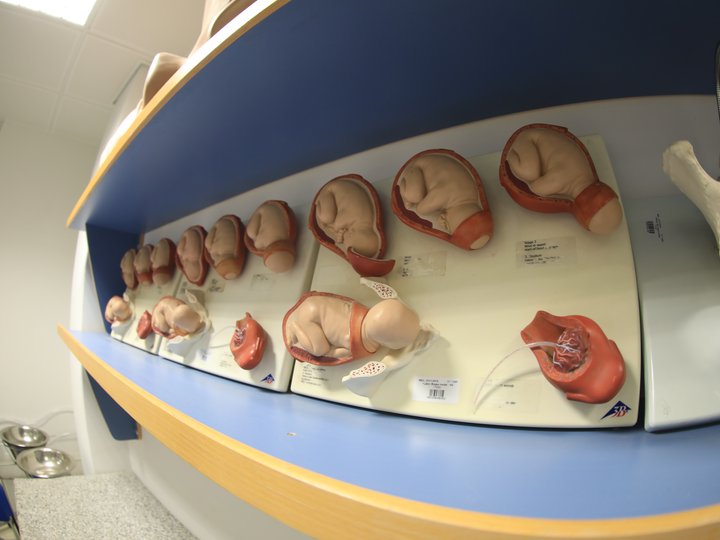
Department of Nursing and Midwifery has introduced maternal health laboratory according to the accreditation committee regulations to improve the educational process's practical aspects. This laboratory uses various ways in learning like videos and CDs that explain the process of pregnancy and childbirth and full training on pregnant women dolls, demonstrating the method of standard delivery in response to theoretical knowledge.
Main Goal
To provide a suitable place, simulates a labor room in a hospital prepared with various equipment and devices that contribute to the preparation and training of midwifery students on different nursing skills.
Specific objectives:
- To train of nursing and midwifery students on the acquisition of practical skills.
- To provide an environment simulated areal environmental hospital field.
- To enhance the student's self-confidence and bridge the gap between the theoretical and practical sides.
- To give students the necessary skills to work within an integrated health team.
Target
Level 1 :
First-year midwifery students start the application of the practical side of the following courses:
- Fundamental of nursing 1
- Fundamental of nursing 2
Clinical evaluation of the mother and child
Level II and III :
The art of nursing and midwifery.
level IV :
- Health care for newborn babies.
- Health care for the mother after the birth stage.
- Recognize complications in childbirth and post-partum.
- Students are divided into groups within a weekly schedule.
- Subject for practical and written exams.
- Procedure check list of nursing skills to be completed successfu
Tools and equipment contained in the lab:
- A modern birth/labor bed - pregnant assessment bed - children examination bed.
- Detection and screening devices·
- Models - pediatric, adult, manikin of pregnant women, and fetus delivery.
- Skeletons, breast model, female genitalia.
- Internal organs such as heart, liver, spleen, gynecologic pelvis.
- Tools to prepare and administer medications and medical disposables.
- Family planning devices.
- The means of education to give educational lecture through computer and LCD projector

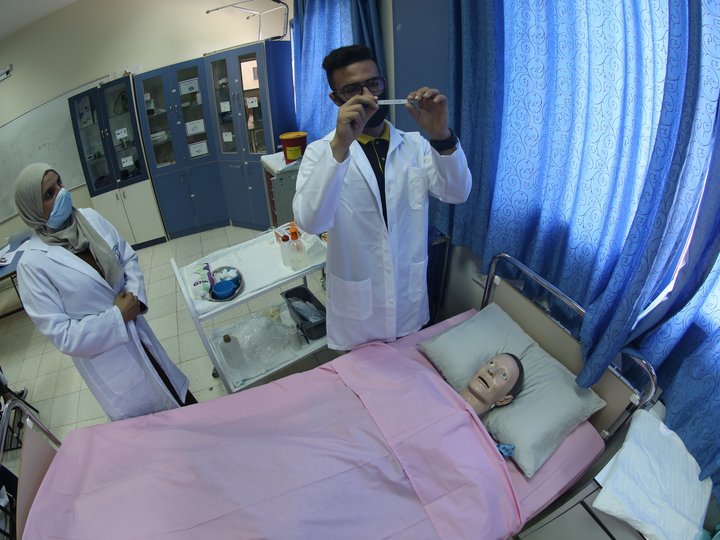
Physical Examination Laboratory contains of figurative human parts devices and special tools that enable students the opportunity to practice the real skills, starting from the comprehensive physical examination of patient, which provides students the ability to discriminate any changes in the status of the patient's health at the hospitals.
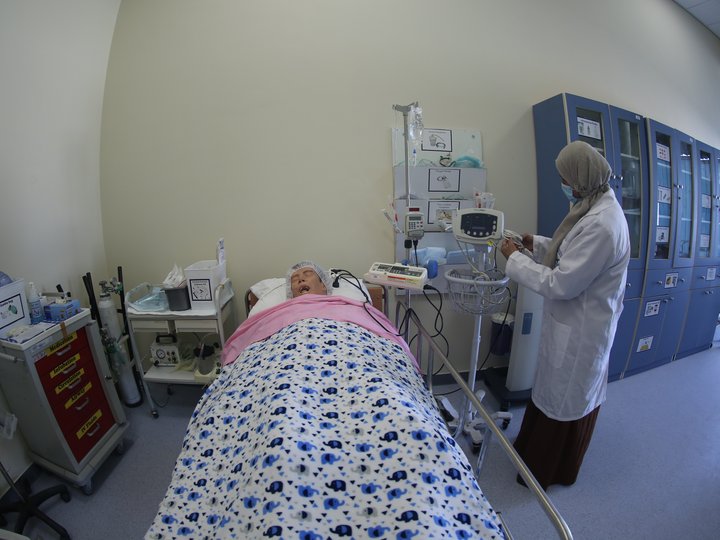
An advanced training laboratory designed to provide high fidelity simulations for students who are learning about critical care or desire to refine their critical care skills. It also provides an interactive system to teach both psychomotor skills and crisis resources management for both critical care nursing and anesthesia nursing master students. Critical care lab dynamically illustrates anesthesia processes and procedures, allowing students to gain experience in advance of patient care. Certain patient situations are uncommon, and therefore a trainee seldom gains experience in managing rare but clinically significant problems. With this advanced prepared nursing lab. Students will build skills and practice unusual events to achieve the best outcome in crisis management.
Equipments
- Two advanced ICU beds.
- Advanced Simulation Dolls Adult, Pediatric, and Neonate to practice Basic Life Support (BLS), Advanced Cardiac. Life Support (ACLA), Pediatric Advanced Life Support (PALS), Neonatal Life Support.
- Adult Airway Management Trainer, Pediatric Airway Management Trainers, Neonatal Airway Management Trainers.
- Physical Examination Equipment: Stethoscope, Laryngoscope, Ophthalmoscope, and Otoscope.
- Advanced Airway Management Equipment: Laryngoscope, ETT Intubation, Combitube, Bougie, Laryngeal Mask, Tracheostomy, Ambu Bag Different Sizes, Oropharyngeal Airway, Nasopharyngeal Airway, In-Line Suction Catheters.
- Ventilatory Supply Equipments: Portable Ventilation Device, Cylinder of Oxygen.
- Cardiopulmonary Managing Equipments: Interactive ECG Simulator, Cardioversion Device, AED.
- Invasive Central Line: CVP, Arterial Line Insertion, and Monitoring.
- Invasive Pulmonary Equipment: Thoracentesis , Chest Tube Insertion, and Monitoring.
- Catheterization Equipment.
- Neurological Procedure: LP , Epidural Anesthesia, Spinal Anesthesia.
- IV Catheterization and Phlebotomy Practices, I.O (Intraosseous) Insertion.
- I.V. Fluid Administration by using infusion pumps, syringe pumps.
- Transportation of the patient-stretchers.
- Anatomy Models: Cardiovascular, Respiratory, Musculoskeletal, Head Model, Digestive System Models, Human Heart Models, Urology Models.
- Advanced Teaching Devices: LCD, Video Screen, Internet Based Learning.
- We are also planning to integrate anesthesia and mechanical ventilation Machines to enrich the students’ skills regarding those advanced procedures.

